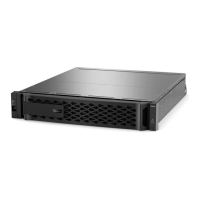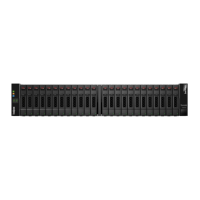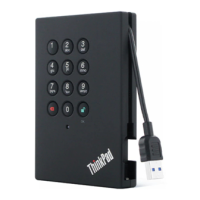Step 1. Display and record license information from the original controllers by using the ssyysstteemm lliicceennssee
sshhooww command.
Step 2. If you use Storage Encryption on the original controllers and the new controllers have encryption-
enabled disks, make sure that the original controllers' disks are correctly keyed:
a. Display information about self-encrypting disks (SEDs) by using the ssttoorraaggee eennccrryyppttiioonn ddiisskk
sshhooww command.
b. If any disks are associated with a non-manufacture secure ID (non-MSID) key, rekey them to
an MSID key by using the ssttoorraaggee eennccrryyppttiioonn ddiisskk mmooddiiffyy command.
Step 3. Record port and LIF configuration information on the original controllers:
To display information about...
Enter...
Shelves, numbers of disks in each shelf, flash
storage details, memory, NVRAM, and network
cards
system node run -node node_name sysconfig
Cluster network and controller management
LIFs
network interface show -role cluster,node-
mgmt
Physical ports
network port show -node node_name -type
physical
Failover groups
network interface failover-groups show
-vserver vserver_name
Note: Record the names and ports of failover
groups that are not clusterwide.
VLAN configuration network port vlan show -node node_name
Note: Record each network port and VLAN ID
pairing.
Interface group configuration network port ifgrp show -node node_name
-instance
Note: Record the names of the interface
groups and the ports assigned to them.
Broadcast domains network port broadcast-domain show
IPspace information network ipspace show
Step 4. Obtain information about the default cluster ports, data ports, and controller management ports for
each new controller that you are upgrading to.
Lenovo Press
Step 5. As needed, adjust the configuration of the network broadcast domains on the original controllers
for compatibility with that of the new controllers: network port broadcast-domain modify
Step 6. If VLANs are configured on interface groups, remove the VLANs: network port vlan delete -node
node_name -port ifgrp -vlan-id VLAN_ID
Step 7. If any interface groups are configured on the original controllers, delete the ports that are assigned
to the interface groups: network port ifgrp remove-port -node node_name -ifgrp ifgrp_name -port
port_name
Step 8. Send an AutoSupport message from each original controller to inform technical support of the
upgrade: system node autosupport invoke -node node_name -type all -message "Upgrading node_
name from platform_original to platform_new"
Chapter 6. Upgrading controller hardware 91

